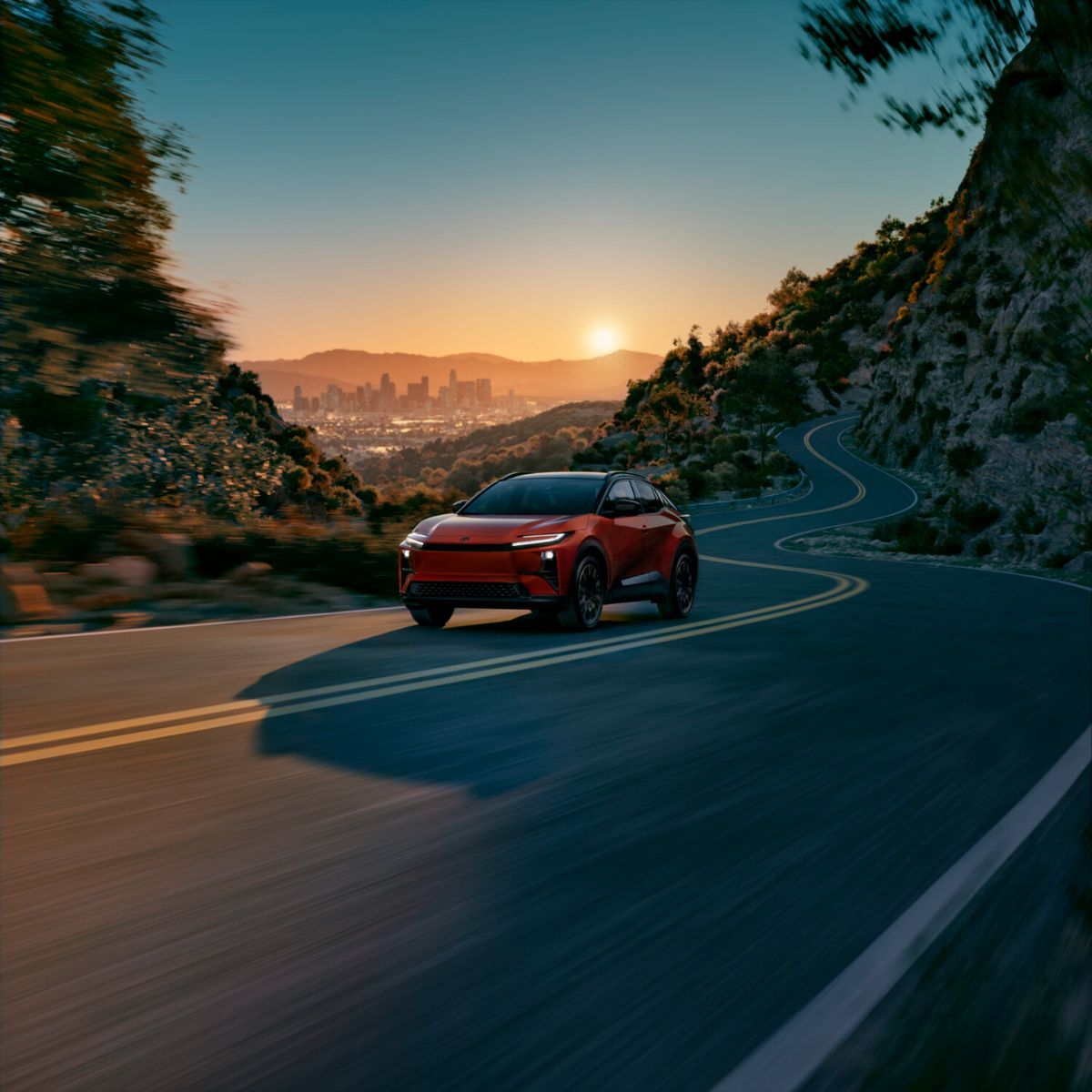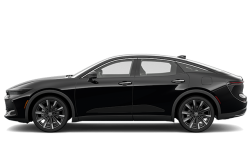6 Ways That Prove the All-New 2026 Toyota C-HR BEV Is Built for Canadian Streets
July 28 2025,

The all-new 2026 Toyota C-HR Battery Electric Vehicle arrives with specifications that address the real challenges of Canadian driving. From urban parking to highway performance, this compact crossover delivers measurable capabilities that work in our climate and road conditions. The numbers tell the story of a vehicle engineered for Canadian streets.
Built on Toyota's dedicated e-TNGA battery electric vehicle platform, the C-HR BEV combines practical dimensions with electric performance that suits Canadian driving patterns. Whether navigating downtown cores or handling highway merging, the specifications reveal a vehicle designed to handle the diverse demands of Canadian roads.
1- Dual Power Options Match Canadian Driving Needs
The 2026 C-HR BEV offers two distinct powertrains tailored to different driving requirements. The SE Front-Wheel Drive model produces 221 horsepower combined system output with a manufacturer-estimated range of up to 500 km. This configuration suits drivers who primarily handle city commuting and suburban errands.
The XSE All-Wheel Drive model delivers 338 horsepower combined system output with electric motors housed in both front and rear eAxles. This AWD system provides precise on-demand torque distribution based on road conditions, making it suitable for Canadian weather variations. The AWD model achieves a manufacturer-estimated range of up to 465 km and can accelerate from 0 to 100 km/h in around 5.2 seconds.
Both powertrains use a 77-kWh lithium-ion battery with an 11-kW onboard AC charger. The NACS charging port provides access to thousands of DC fast-charging stations nationwide, with the ability to recharge from 10% to 80% battery capacity in around 30 minutes under ideal conditions.
2- Compact Dimensions Enable Urban Manoeuvrability
The C-HR BEV's measurements work well for Canadian urban environments. With an overall length of 4,520 mm, overall width of 1,870 mm, and overall height of 1,595 mm, the vehicle fits standard parking spaces while providing crossover utility. The 2,750 mm wheelbase contributes to interior space while maintaining manageable overall length.
These dimensions allow the C-HR BEV to navigate tight city streets and parking structures common in Canadian urban centres. The compact footprint doesn't sacrifice interior accommodation, with generous headroom and ample cabin space for passengers.
The underfloor-mounted battery pack creates a low centre of gravity that enhances stability during cornering and highway driving. This design also maximizes interior space by eliminating the need for a traditional drivetrain tunnel.
3- Regenerative Braking System Offers Four Adjustment Levels
The C-HR BEV features steering wheel-mounted paddle shifters that control regenerative braking power across four different levels. This system converts kinetic energy into electrical energy, adding charge to the traction battery during deceleration and braking situations.
Drivers can adjust regenerative braking intensity based on driving conditions and personal preference. Higher regenerative braking levels provide more aggressive energy recovery and can reduce brake pedal use in stop-and-go traffic. Lower levels offer a more traditional driving feel for highway cruising.
This regenerative braking system helps extend driving range while providing customizable driving characteristics. The paddle shifter controls allow quick adjustments without taking hands off the steering wheel or eyes off the road.
4- Generous Cargo Capacity Handles Canadian Lifestyle Needs
The 2026 C-HR BEV provides 720 litres of cargo space behind the rear seats, accommodating the equipment and supplies that Canadian drivers regularly transport. The 60/40-fold flat rear seats expand cargo capacity when needed for larger items.
This cargo capacity works for winter sports equipment, camping gear, and seasonal storage needs common in Canadian lifestyles. The power liftgate provides convenient access, while low-profile roof rails add exterior cargo carrying capability for bicycles or roof boxes.
The clean interior design includes dual wireless smartphone chargers in the centre console and rear cabin USB ports, ensuring devices stay powered during longer trips across Canadian distances.
5- Battery Preconditioning Optimizes Cold Weather Performance
The C-HR BEV includes a battery preconditioning function specifically designed for Canadian winter conditions. This system brings the battery to optimal temperature for DC fast charging, enabling faster charging in colder climates where battery performance typically decreases.
The preconditioning function can be activated manually by the driver or automatically by setting the navigation system destination to a fast-charging station. This ensures the battery reaches ideal charging temperature before arrival, reducing charging time and maintaining efficiency in sub-zero temperatures.
Additional battery management features include abnormal heating detection to maintain optimal battery temperature and prevent cell damage. A high-resistance coolant circulation system helps prevent thermal events even during repeated cycles of highway driving and rapid charging.
6- Advanced Safety Systems Support Canadian Road Conditions
The C-HR BEV comes standard with Toyota Safety Sense 3.0, providing active safety features that work in Canadian driving conditions. The system includes Pre-Collision System with Pedestrian Detection, Full-Speed Range Dynamic Radar Cruise Control, and Lane Departure Alert with Steering Assist.
The XSE AWD grade adds advanced features including Traffic Jam Assist, Lane Change Assist, and Panoramic View Monitor. These systems help manage the various driving scenarios encountered on Canadian roads, from urban traffic to highway cruising.
Front and Rear Parking Assist with Automatic Braking comes standard on both grades, providing additional confidence during parking in tight urban spaces or busy parking lots common across Canadian shopping centres and downtown areas.
Performance Summary
|
Specification |
SE FWD |
XSE AWD |
|---|---|---|
|
Power Output |
221 hp |
338 hp |
|
Estimated Range |
Up to 500 km |
Up to 465 km |
|
Cargo Space |
720 litres |
720 litres |
|
Battery Capacity |
77 kWh |
77 kWh |
The 2026 Toyota C-HR BEV will be available at Toyota dealers across Canada in 2026, with pricing announced closer to launch. These measurable capabilities demonstrate how electric vehicle technology can address the practical requirements of Canadian driving.
Experience these capabilities firsthand at Acadia Toyota in Moncton, where our team can walk you through the C-HR BEV's specifications and arrange a test drive when available.



